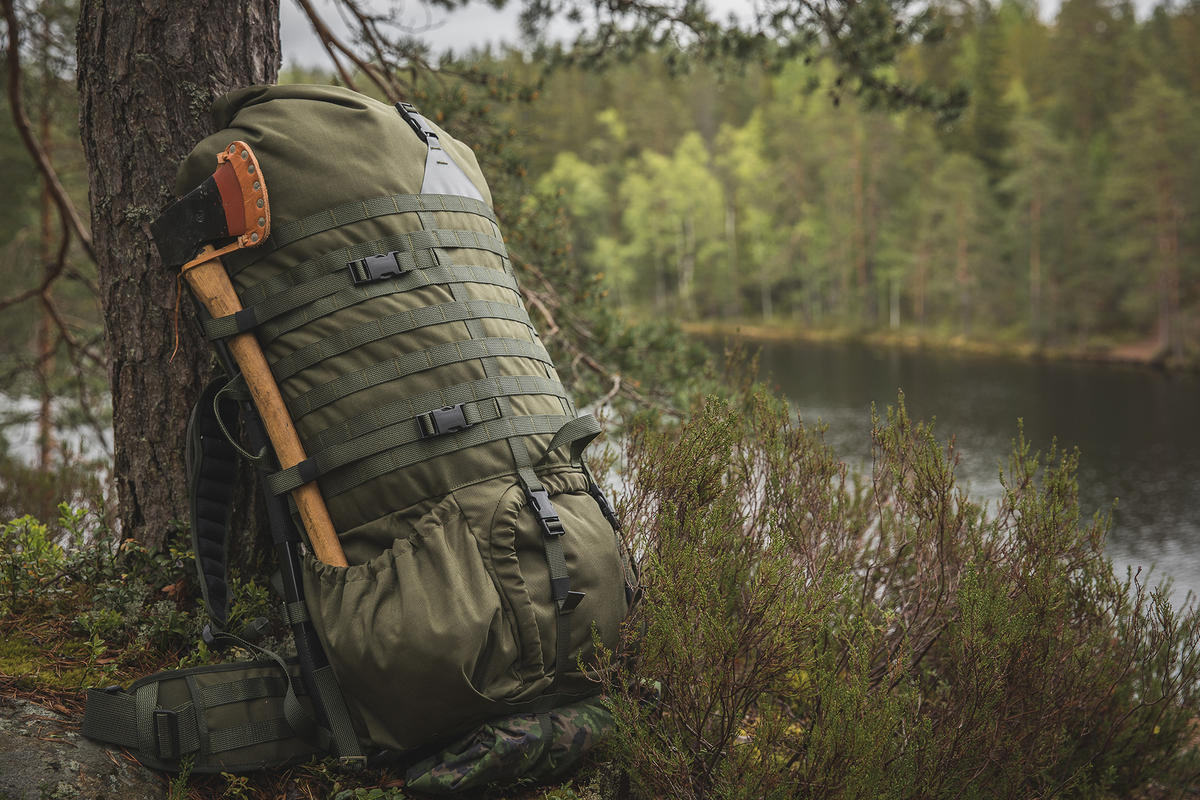
Choosing the right rucksack
Choosing the right rucksack
The best rucksack for rucking is the one that meets both your traveling needs and your budget. Whether you are going to your backyard or Yellowstone, or with Jimmy Blenkinsops to both of the Kilimanjaros, read this article and get started!
Note: Before you loosen the strings of your digital purse and press the oh-so-wonderful BUY button in a web store, make sure that your purchase is something that fits your body and your needs. You can do this by going to a brick and mortar store to try out different options and ask a professional for their opinion – or just read this article. You can also do both if you put some effort into it!
We also have articles on how to pack a rucksack and what you might need on a trip to assist you in your decision-making.
THE WILD WORLD OF BACKPACKS AND RUCKSACKS
What is a rucksack? A rucksack is a larger backpack, designed to carry heavier loads. It naturally is the best backpack for rucking, and therefore – a rucksack. A rucksack usually has a hip belt to take most of the weight off the shoulders. The shoulder straps as well as the chest strap are adjustable, and these really take the misery out of carrying even a heavier load across country.
There are various types of rucksacks in the world. There’s a Savotta rucksack, a pink rucksack, and a cheap rucksack. However, the most important aspects of choosing the right backpack come down to these things: capacity in liters (or cubic inches), adjustability to your size and your gear, and other features that might make or break your trip experience.
The first thing to do when choosing the right rucksack is to consider its intended use. What kind of trips you are going to do, in what conditions, and at what time of the year – these are the main factors when deliberating the capacity and features of your backpack.
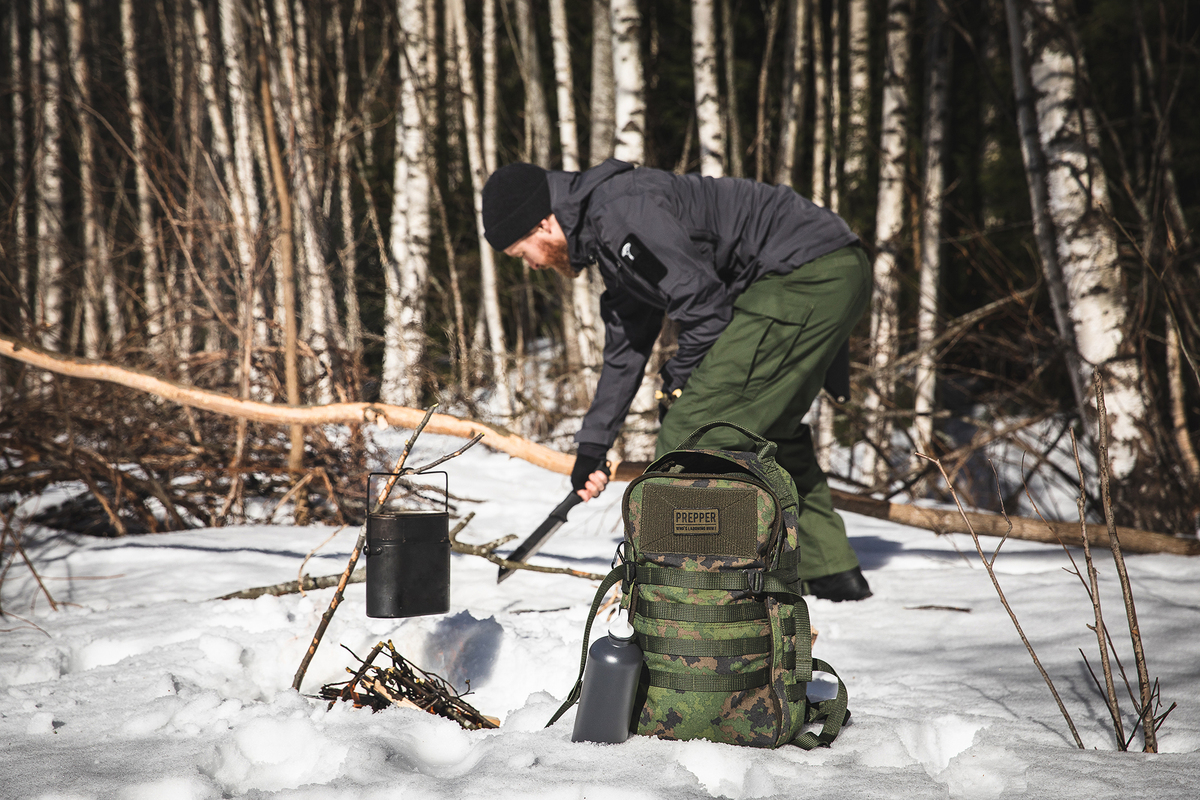 If you only like to hike in summer and won’t spend more than a couple of nights in the forest at a time, you will manage with a much smaller pack than a person who enjoys week-long hiking trips in the wilderness, "behind God’s back", as we say in Finland. If you're not entirely sure what to take with you on a backpacking trip in certain conditions, there is a lot of good information on the web, such as our article on winter hiking.
If you only like to hike in summer and won’t spend more than a couple of nights in the forest at a time, you will manage with a much smaller pack than a person who enjoys week-long hiking trips in the wilderness, "behind God’s back", as we say in Finland. If you're not entirely sure what to take with you on a backpacking trip in certain conditions, there is a lot of good information on the web, such as our article on winter hiking.
SIZE DOES MATTER
What size should your rucksack be? Choosing rucksack size is not made difficult in terms of availability, as there are all possible sizes to choose from. Our collection is quite extensive: We have everything from tiny day packs to massive 100 liter rucksacks. There are rucksacks with exterior frames and with internal ones. Backpack and rucksack sizes go by their volume in liters, and they can be roughly divided into the following categories:
- 10-20 liter backpacks are good for everyday use – for school, gym, patrol day packs, and so on
- 30-40 liter large backpacks are suitable for short and longer one-day trips – this also is a comfortable size for carry-on luggage in most cases
- 50-60 liter rucksacks will probably handle all your needs for a 3-day trip
- 70-100+ liter large rucksacks are for week-long trips and more
The need of carrying space is of course individual – more seasoned adventurers know exactly what to carry on a trip of a certain length and weather conditions, and by experience, everyone will fine-tune their loadout. Unnecessary gear is dead weight, and your feet and back will pay for it, but after a few outings, you’ll find out what those extra items are.
If you spend your traveling nights indoors with heating, and you have an infinite amount of clean drinking water at your disposal, you will probably get by with surprisingly little – even if the trip was long in both time and distance. If you travel in a group, you can divide certain group items between people. If your group is in high spirits and still in amicable terms, probably not everyone needs to carry an axe, or a Trangia cooker with appropriate fuels.
The rucksack size is also relative to the user’s size.
One detail to consider is the size of the hiker as well. For example, a super tall guy wearing Mega Large clothes will need more space for a sleeping bag and spare clothes than an X-Small pixie person (or a child). Another thing to take into consideration is how heavy and bulky your gear is in general. Ultralight spandex technical hiking is a whole other ballgame – but if you have evolved that far already, maybe this article is quite mundane to you.
What is the best backpack for bushcraft? What about the best backpack for running? Different types of activities generally require different types of backpacks or rucksacks. If you decide to invest in only one load carrying item (or you really only do the one and same activity in the same way and for the same length of time, ever), it might be wise to get one a bit on the larger side. Large backpacks are more versatile than smaller backpacks, which you then might need to overpack or equip with all sorts of extra pouches. Overpacking and forcibly stuffing your tiny backpack will result in poor accessibility and carrying ergonomics. Larger backpacks usually have integrated compression straps which enable you to really tighten that thing up even if it was nowhere near being fully packed.
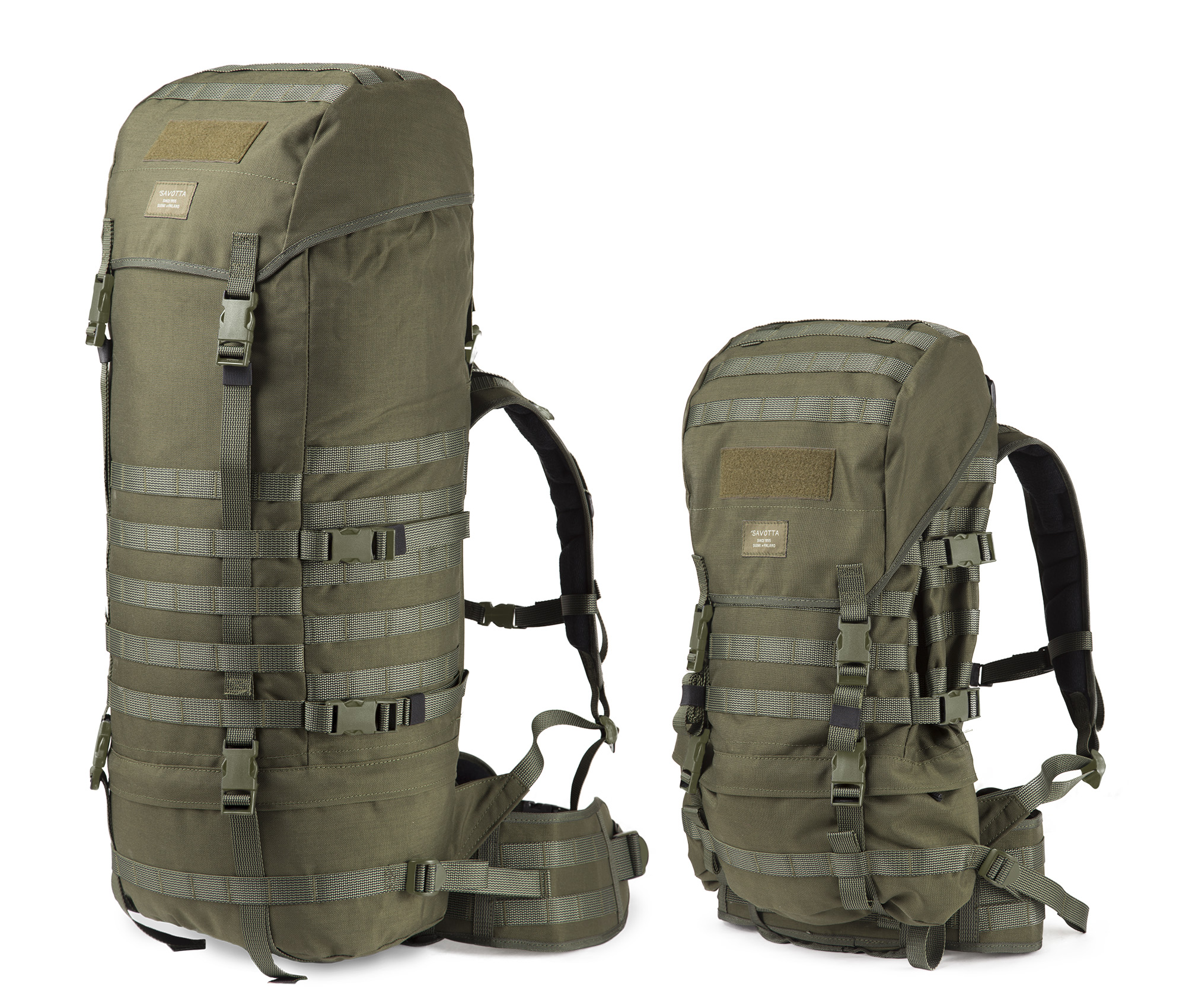 Large rucksacks can usually be compressed when not full – this is the Savotta Jääkäri L (Photo: Savotta)
Large rucksacks can usually be compressed when not full – this is the Savotta Jääkäri L (Photo: Savotta)
As a rule, you should pack all your stuff inside your backpack. Stuff hanging outside of your backpack such as frying pans, pots, and lunch bundles, are imagery from romantic hobo movies, not a recommendable thing of this physical reality. Moving through nasty terrain will be even harder if your backpack has extremities wider and taller than you – they will get caught on everything and probably throw you off balance in a bad spot.
For the heaviest loads, it might be wise to choose a rucksack with an external frame. Lighter framed rucksacks and backpacks might lose some of their rigidity and carry ergonomics with extreme load weights. Some scenarios might involve certain people carrying 100 lbs / 45 kg or more on their back for a really, really long while.
There are also some smaller backpacks, such as the Savotta Jääkäri M, which has an optional accessory frame, which can be inserted into the backpack to make it more rigid in order to enhance its weight capacity.
RUCKSACK ADJUSTMENTS
Apart from being able to fit all the stuff one might need on a trip, the rucksack must also fit the person who is doing the carrying. Some backpacks come in different sizes, usually based on the user’s height, and others have adjustments for getting that correct back length put in.
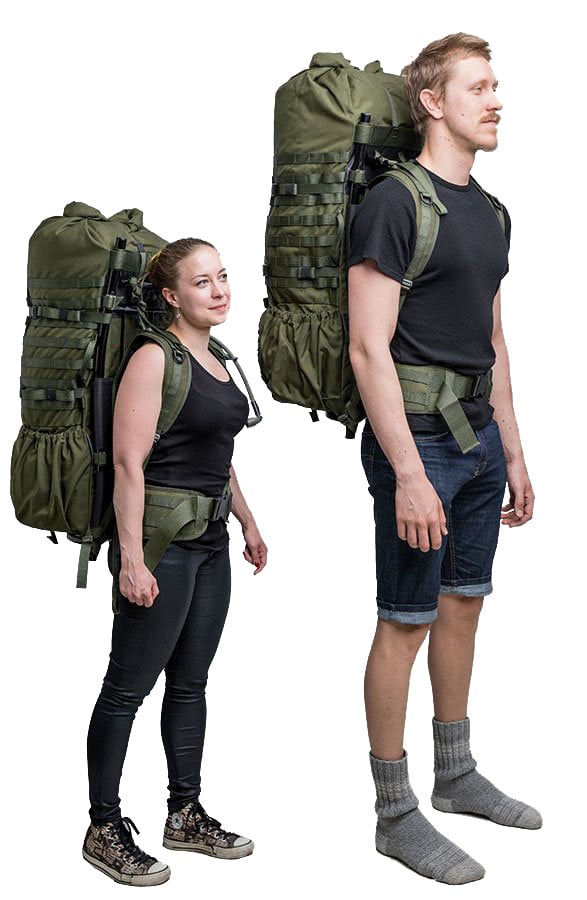 The Särmä TST RP80 is adjustable for 160 - 200 cm / 5’3" - 6’7" users.
The Särmä TST RP80 is adjustable for 160 - 200 cm / 5’3" - 6’7" users.
Small backpacks are almost always just one size, but even those have at least length-adjustable shoulder straps. If you are very tall or short, finding the perfect backpack might require more effort and research. Some manufacturers have models for kids, but generally speaking small children should at most carry a small backpack with some morale boosting items (toys, snacks), and the adults carry everything else.
The correct rucksack adjustments require the correct packing of the rucksack. A balanced and snugly compressed rucksack is not that hard to adjust. Most rucksacks and backpacks work with the same set of moves: loosen the hip belt, shoulder straps, load adjuster straps, and the sternum strap – put the backpack on, and tighten the hip belt, shoulder straps, load adjuster straps, and the sternum strap.
If you need a more detailed instruction with a slide show to get your backpack in check, read our article on rucksack adjustments!
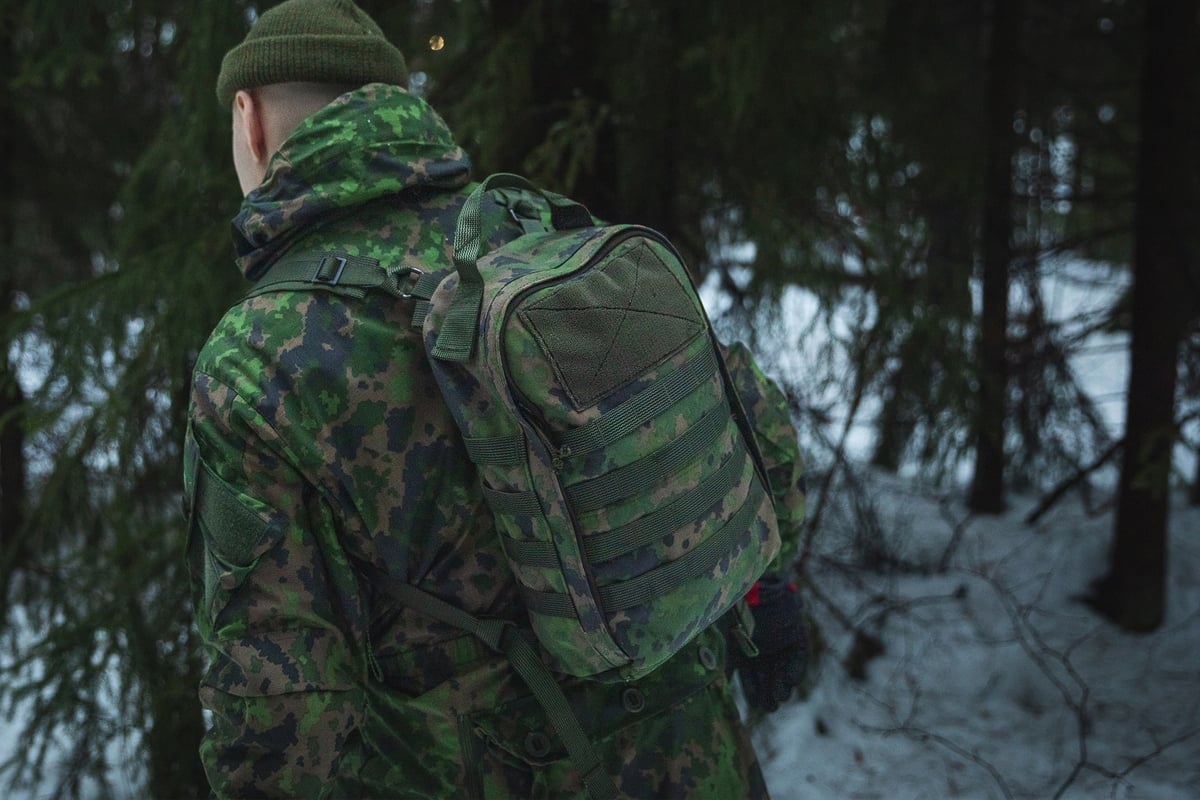 For everyday stuff such as some light reconnaissance, a smaller backpack is perfect. Here we have a Särmä TST CP10.
For everyday stuff such as some light reconnaissance, a smaller backpack is perfect. Here we have a Särmä TST CP10.
OTHER RELEVANT FEATURES
When the general idea of the backpack size and adjustability you might need starts to crystallize like the blue stuff in Heisenberg’s lab, it is time to consider other features you might need in your backpack.
- Compartments. Backpacks have various compartment systems. Some have just one big main compartment, which usually is top-accessible. Others also have a lower compartment, which might be zippered. There might be a closure between these two compartments, which can be opened to have one big compartment again. Many backpacks have a separate pouch for a water reservoir (bladder), which is handy for carrying a lot of water weight. The top lid plus other parts of the backpack might have a compartment for little trinkets. Separate pack sacks will of course solve all your problems of keeping stuff in order.
- Opening mechanism. As said above, there are all sorts of innovations that improve the usability and accessibility of backpacks. The most common model is a top-accessible and top-loaded backpack. Some backpack main compartments have a side zipper, which enables you to manipulate items on the bottom without having to take everything out first. There are also models that solely work with zippers, such as some Mystery Ranch products.
- Dry weight. One thing to consider is the backpack's own weight. Backpacks with similar volumes might have a difference in weight. Although, usually more weight means more robustness and weight capacity, as with rucksacks with external frames. Then again, you might have to pay good money for that lightness, if it is achieved by the use of some miracle materials like titanium or space age carbon nanotubes.
- Dealing with water and snow. Typically the backpack fabrics have at least some sort of water repellent properties, and the inner main compartment closure doubles as a snow barrier. Zippers may or may not be waterproof, and they might have cover flaps. If you want to be sure of keeping your things nice and dry, you should pack them in dry bags, and not trust your backpack’s this and that trademarked superfabric. More fair and balanced opinions on this can be found in our article on how to pack a rucksack!
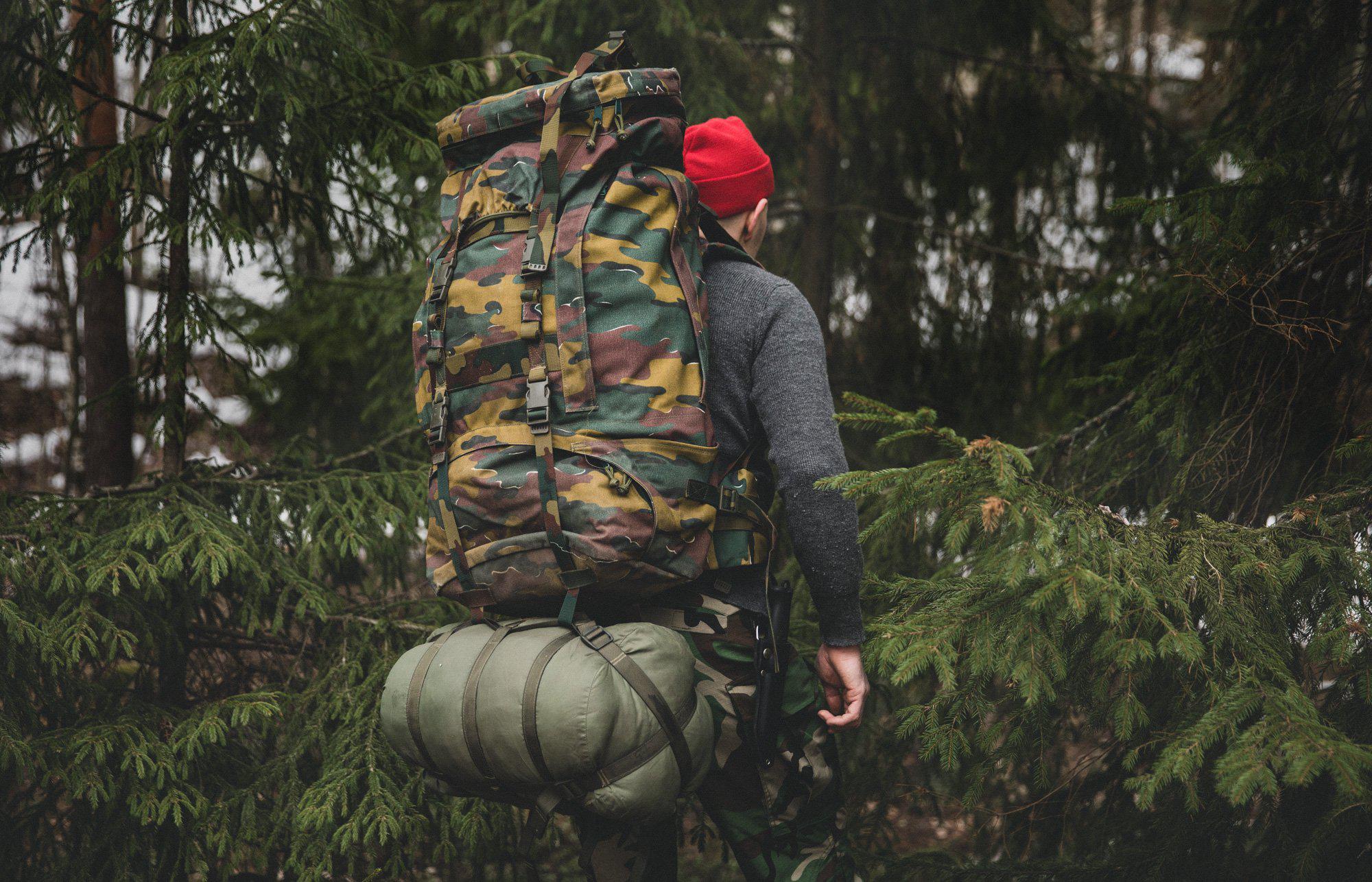 You shouldn't pack your sleeping bag outside of the rucksack. Here we have a Belgian surplus rucksack.
You shouldn't pack your sleeping bag outside of the rucksack. Here we have a Belgian surplus rucksack.
- Expandability and overpacking. The ground rule of packing your stuff is to put everything inside your backpack. See the aforementioned packing article about this too. If you insist on using separate cargo pouches to organize and/or have more room, choose a backpack with PALS webbing areas for attaching MOLLE pouches. A momentary need of overpacking might also arise, then a backpack with a height-adjustable top flap will be handy. Look for gear loops, daisy chains, and such if you think you’ll have to hang items on the outside of your backpack to, say, dry them. Some backpacks and rucksacks are more suited to have elongated items attached to their sides, such as skis, ski poles, axes, ice picks, and whatnot.
- Color. Well, the color does matter, too. If you aim to have a small visual profile while in the bush, you might want to have a green or brown backpack, or a backpack with a camo pattern. If you don’t want to look like a warmonger, choose something different. Bright, unnatural colors can also be useful if you run into a problem and want to be found as fast as possible. You can also carry a bright-colored rain cover to achieve this.
- Thinking out of the box. If you mainly travel by vehicles, and you carry your stuff on your back only here and there, a duffel bag with shoulder straps might be your thing. There are all sorts and sizes of duffel bags, with wheels and without, and also waterproof if you happen to use a kayak, a canoe, an Optimist dinghy, or something.
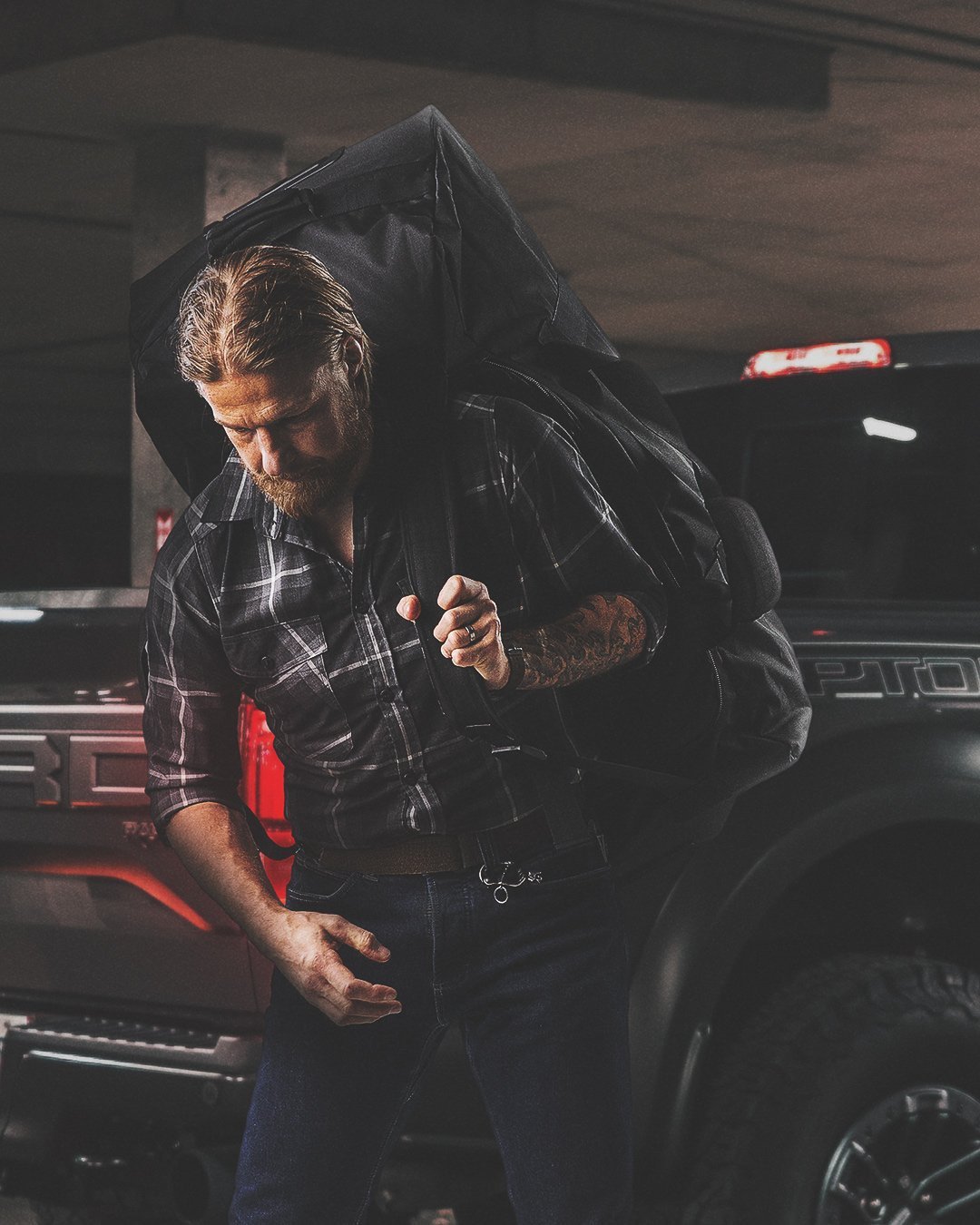 If you travel by vehicles, a duffle bag might be your thing.
If you travel by vehicles, a duffle bag might be your thing.
We aim to please
Was this article helpful? We hope so. Our collection has new and modern backpacks and rucksacks in various sizes, but also a little bit used and more affordable military surplus ones – they are also a fine choice. Military surplus backpakcs are built according to stringent material, toughness, and durability specifications, and they last a long time. So, get yourself the correct rucksack or backpack, and get out of the house!
Store
00390 Helsinki
Mon-Fri 10:00-20:00
Sat 10:00-19:00
Sun 12:00-17:00
Exceptions to opening hours on the Store page.
Propaganda
Contact us
[email protected]
Mon-Fri 08:00-20:00 EET
Sat 10:00-18:00 EET
Sun 10:00-18:00 EET
See all Contact Information.